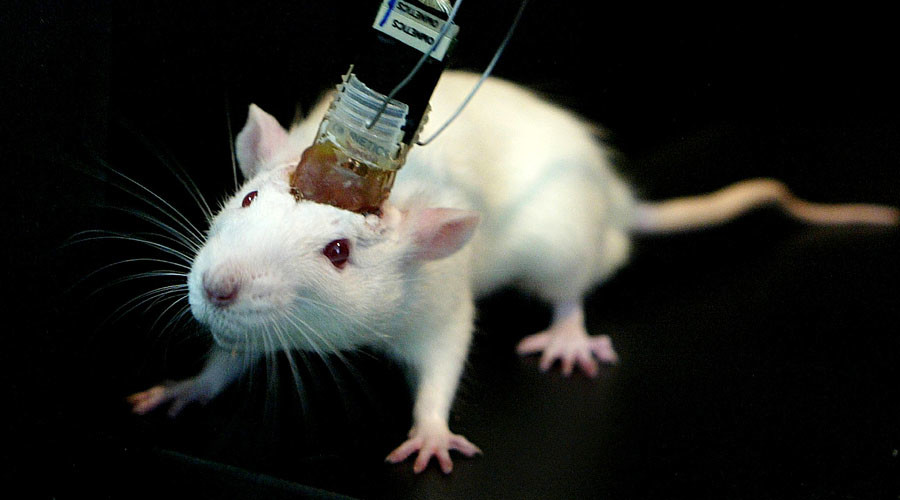Matthew Stock reporting to Reuters informed about a recent successful results obtained by the scientists in the field of neural networks of the mice. The researchers were able to control the neural networks of mice with the help of “wireless controller”. Consequently, they were able to monitor the “effects of neural stimulation” on the animal by methods that were not subjects to “wires” intervention.
In order to effectuate the experiment, the scientists installed a “tiny implant” which had a width of less than “a human hair”. Interestingly, with the help of this implant they were able to determine the path which the mouse in subject would take to walk, all by injecting drugs and shining lights “on neurons inside the brain” through the remote control. This attempt made by the researchers has proven to be a pioneering example as prior to this experiment the field of scientists intervention was narrowed down within the limitations of large tubes’ drug injection, whereby by prompting “fiber-optic cables” to generate photostimulation. Both these processes could render damage to the brain resulting in restrictions of “an animal’s natural movements” as they involved brain surgery.
Reuters inform that the scientists “typically use” optofuidic implant in order to inject drugs in to the subject animal. The said process was result of the collaborate development of the University of Illinois and the Washington University School of Medicine. However, the said method, was “found to damage and displace much less brain tissue than the metal tubes, or cannulas”.
As far as the wireless title of the experiment goes, the scientists use small batteries, “removing the need for” wires, to power the device containing “tiny reservoirs filled with the drugs”. Mostly, the device is fitted on the animal’s head whereby the fluid drug is injected into the brain of the subject with controlled parameters while conducting the tests. In one of the tests from the series which were performed in this manner, the subject mice were instructed to “walk in circles” followed by an injected dose of drug mimicking the effects of morphine. Moreover, the said drug was inject into the part of the mice brains which affect “motivation and addiction”.
In fact, the scientists performed another series of tests on the mice wherein they used the technique called “optogenetics”. In the aforementioned tests the mice undergo a modification of their neurons which turns them “light sensitive”. Consequently, the researchers can stimulate the brain cells of the mice with the help of “miniature LEDs”. While describing the methodology of the tests conducted, Reuters report that:
In order to effectuate the experiment, the scientists installed a “tiny implant” which had a width of less than “a human hair”. Interestingly, with the help of this implant they were able to determine the path which the mouse in subject would take to walk, all by injecting drugs and shining lights “on neurons inside the brain” through the remote control. This attempt made by the researchers has proven to be a pioneering example as prior to this experiment the field of scientists intervention was narrowed down within the limitations of large tubes’ drug injection, whereby by prompting “fiber-optic cables” to generate photostimulation. Both these processes could render damage to the brain resulting in restrictions of “an animal’s natural movements” as they involved brain surgery.
Reuters inform that the scientists “typically use” optofuidic implant in order to inject drugs in to the subject animal. The said process was result of the collaborate development of the University of Illinois and the Washington University School of Medicine. However, the said method, was “found to damage and displace much less brain tissue than the metal tubes, or cannulas”.
As far as the wireless title of the experiment goes, the scientists use small batteries, “removing the need for” wires, to power the device containing “tiny reservoirs filled with the drugs”. Mostly, the device is fitted on the animal’s head whereby the fluid drug is injected into the brain of the subject with controlled parameters while conducting the tests. In one of the tests from the series which were performed in this manner, the subject mice were instructed to “walk in circles” followed by an injected dose of drug mimicking the effects of morphine. Moreover, the said drug was inject into the part of the mice brains which affect “motivation and addiction”.
In fact, the scientists performed another series of tests on the mice wherein they used the technique called “optogenetics”. In the aforementioned tests the mice undergo a modification of their neurons which turns them “light sensitive”. Consequently, the researchers can stimulate the brain cells of the mice with the help of “miniature LEDs”. While describing the methodology of the tests conducted, Reuters report that:
“The test subjects were made to stay on one side of a cage by remotely making the implant shine pulses of light on the specific cells. The mice were about three feet away from the remote antenna during the experiments.”
The results of the above mentioned experiments were published in the scientific journal named “Cell”. The scientists are hopeful that such developments could lead to the treatments of “neurological disorders” in humans like “stress, depression, addiction, and pain” through “minimally invasive probes”.
References:
http://www.reuters.com/article/2015/07/24/us-usa-wireless-mouse-brain-idUSKCN0PY24920150724






